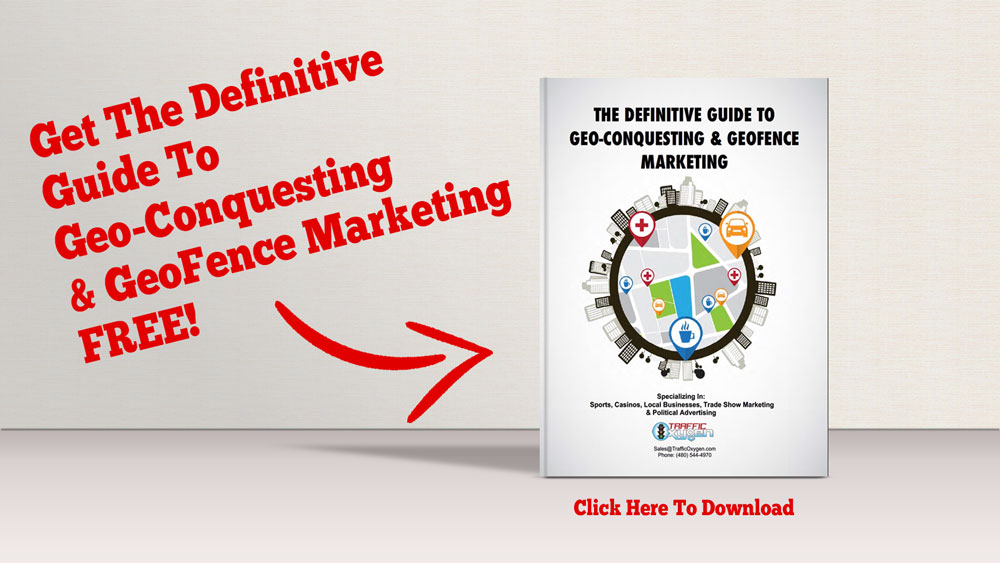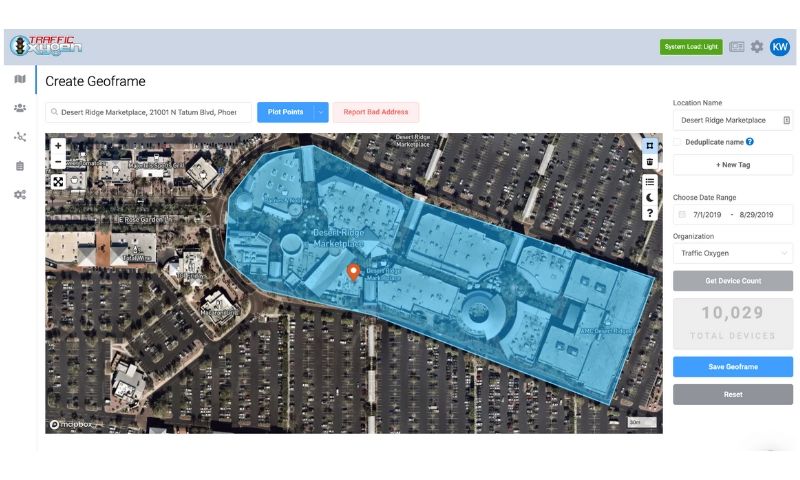
by Chris | Jul 7, 2022 | GeoConquesting, Geofencing, Google Analytics
Traffic Oxygen’s attribution reporting tool is useful for measuring campaign performance and foot traffic from a target audience that you are marketing to against a destination – the location or set of locations you were driving them to visit during the campaign period. You can measure visitors to a website or landing page using Traffic Oxygen’s or your own pixel and include them in your attribution reports. But did you know that you can run attribution reporting at any time and that there are some valuable reasons for doing so? Here are alternative ways you can use the attribution reporting tool and why:
Pre-campaign Analytics and Research
Compare your target audiences built with the demographic selector, web pixel (including IP address upload), or residential address upload against the current foot traffic to your destination(s) pre-campaign. Additionally, analyze the demographic makeup of current responders to provide insights into how to tailor your offer, or reveal a customer persona you should be pursuing instead. This analysis can allow you to make proactive adjustments to your target audience in order to make your campaign even more effective. Build a post-campaign attribution report and compare the lift in foot traffic that your marketing efforts created!
Audience Filtering
Have you ever wondered how best to create an audience that combines two different audience types? Attribution reporting allows you to filter your audience in a multitude of ways to get even more precise targeting. Below are a few examples:
- Demographics vs. in-store visitors (example: how many women aged 35-50 with children shop at competitor stores?)
- In-store shoppers vs. Trade Area households (example: how many loyal customers live in the local area?)
- Website visitors vs. in-store visitors (example: how many digital visitors also show up in-person? Do they have different demographics or live in different areas?)
- Create targets from shoppers that shop at your store and competitor location(s)
- Filter current in-store/web customers out of your target audience
Overlap Analysis
Create a customer persona based on an analysis of the locations that they frequently visit. For example, your target audience includes avid outdoor enthusiasts. People in this persona are likely to visit locations such as hiking trailheads, ski resorts, or climbing gyms. Running an attribution report to identify a group of devices that visit more than one of these locations can help you pinpoint your outdoor enthusiast audience even further.
During Campaign Performance
We have made running more frequent attribution reports easier with our weekly scheduling tool. This allows you to run reports on an automated basis to understand performance during your campaign. See foot traffic trends before the campaign is over, allowing you to make adjustments to your offer, creative, landing page, optimizations in the DSP, etc.
Digital Customer Journey via Web Pixel
Use a web pixel audience as either a target or destination audience in an attribution report to understand the full customer journey from both an in-person and digital perspective. Using Traffic Oxygen’s web pixel onto your site and creating pixel audiences will help you segment your customers into digital-only, in-store only, or a hybrid of the two which can further help you tailor offers to these customers based on their behavior and where they prefer to shop.
Responder Audiences
Audience filtering can be utilized via a responder audience to enhance your original target and can be published to your DSP or social media network similar to other audience types. Utilize our audience extension capabilities to further increase your reach and scale to known visitors to your destination(s).
As you can see, there are many different options for running attribution reports other than after a campaign has been completed. Contact our team today to learn more about this tool and other audience-building functions within the platform.

by Traffic Oxygen | Jan 5, 2022 | GeoConquesting, Geofencing
Download our “Definitive Guide to Geo-Conquesting & GeoFence Marketing” now! This is everything you have ever wanted to know about Geo-Conquesting and GeoFencing. This complete guide will walk you through the details of what it is, how it works, and has some white papers included to you can see what others are doing with it.
This is quite interesting and could lead to some incredible marketing for your company. Download this now to learn more about this and reach out to us if you have any questions or if you are ready to get started!
Download The Definitive Guide To GeoConquesting

by Traffic Oxygen | Sep 4, 2019 | GeoConquesting
Marketing and advertising with geotechnology is as diverse as the local or national brands doing the advertising. Major enterprises and local businesses have stepped up their location-based audience targeting for advertising. Understand the trends and jump in with big-data.
Location data, geofencing, geoconquesting: location-based technology is opening up a world of possibilities for marketers. The differences in tech can make or break your efforts. It’s becomes complicated as new capabilities emerge every day.
Let’s break down some use cases and important “geo” concepts to provide a better understanding of the basics. You are clearly considering geofencing in your bag of tricks. Why not reach out for your free portal!
The barriers to entry for powerful location based advertising have dropped, thanks to GeoFencing agencies like Traffic Oxygen who not only run highly ads but set up and optimize them with no management fees. Let’s talk about strategy concepts and get your feet wet with geoconquesting.
 What Is Geofencing?
What Is Geofencing?
Geofencing is the practice of using global positioning (GPS) or radio frequency identification (RFID) to define a geographic boundary. Then, once this “virtual barrier” is established, the administrator can set up triggers that send a text message, email alert, or app notification when a mobile device enters (or exits) the specified area.
We call these live time proximity ads “hypermobile (HM in your Traffic Oxygen dashboard) and use satellite geofencing for our advertising.
Our technology takes it a step further: once we have picked up your target within the geofence, we can send them ads for the life of their phone. Additionally, we can pull historical data from any location in the US and create an audience to target from when and where your targets were in the geofence.
Think on that one for a minute. Where are your desired customers? A trade show last month on Friday? Your competitor down the street? Let that sink in a moment. We introduce you to your competitors customers and track when they come to your location. We’re talking geoconquesting here.
So, businesses can section off a geographic area and communicate with devices within that space — understood. But why do they want to?
How To Market With Geofencing
Geofencing is a way to engage consumers based on hyper-local location, and that can do a lot in terms of triggering immediate sales as well as understanding shopper mindset.
For example, a store could erect a simple geo-fence in an area surrounding its physical location. When users pass through, receiving a location-triggered alert or deal makes them considerably more likely to stop in and shop.
Alternatively, an auto dealer, for example, could set up a geo-fence aimed at targeting individuals who are leaving a rival dealership after browsing for a vehicle. Hitting them with an offer for$500 off a comparable vehicle with a written offer could bring new customers in droves.
Finally, even if a geo-fenced offer or notification doesn’t provoke an immediate visit or sale, it allows a business to know exactly what location a consumer passed through — and where they were when they received the message — which may aid in refining targeting efforts in the future based on what communications were most successful.
Additionally, we can see where the potential targets live; how far are they willing to travel to a competitor vs. your own company/client? We can see income levels, household size, age, sex… you’d be amazed what we can pick up. This valuable insight is used to construct and improve your geofencing advertising and marketing efforts. More insight means more conversions.



